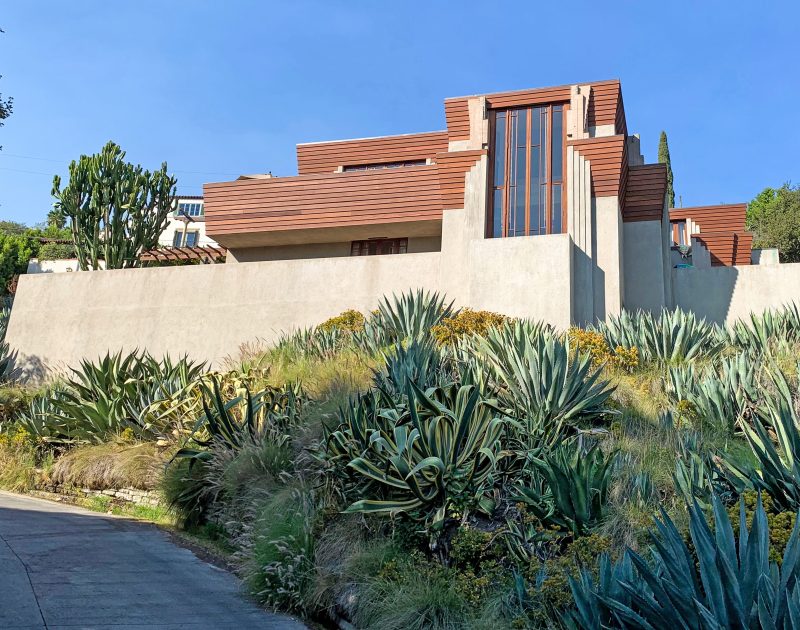Everyone’s heard of Frank Lloyd Wright, but did you know that he had a son who was also an accomplished architect? Because I didn’t.
A Serendipitous Discovery
One of the many benefits of having a dog is the forced exercise. Since I moved to Beverly Hills, I’ve been taking my dog on long walks through a cute little neighborhood on the edge of Beverly Hills overlooking Roxbury Park. Walking through the neighborhood is a visual feast of white homes with picket fences and perfectly preened shrubbery, and then there it is–the one house that just doesn’t quite fit.
It’s pink, and has a weird breezeblock type facade that wraps the entire home. What’s the story on this house, I thought? So I Googled the address, and I was shook. This pink house was designed by Frank Lloyd Wright … Jr.
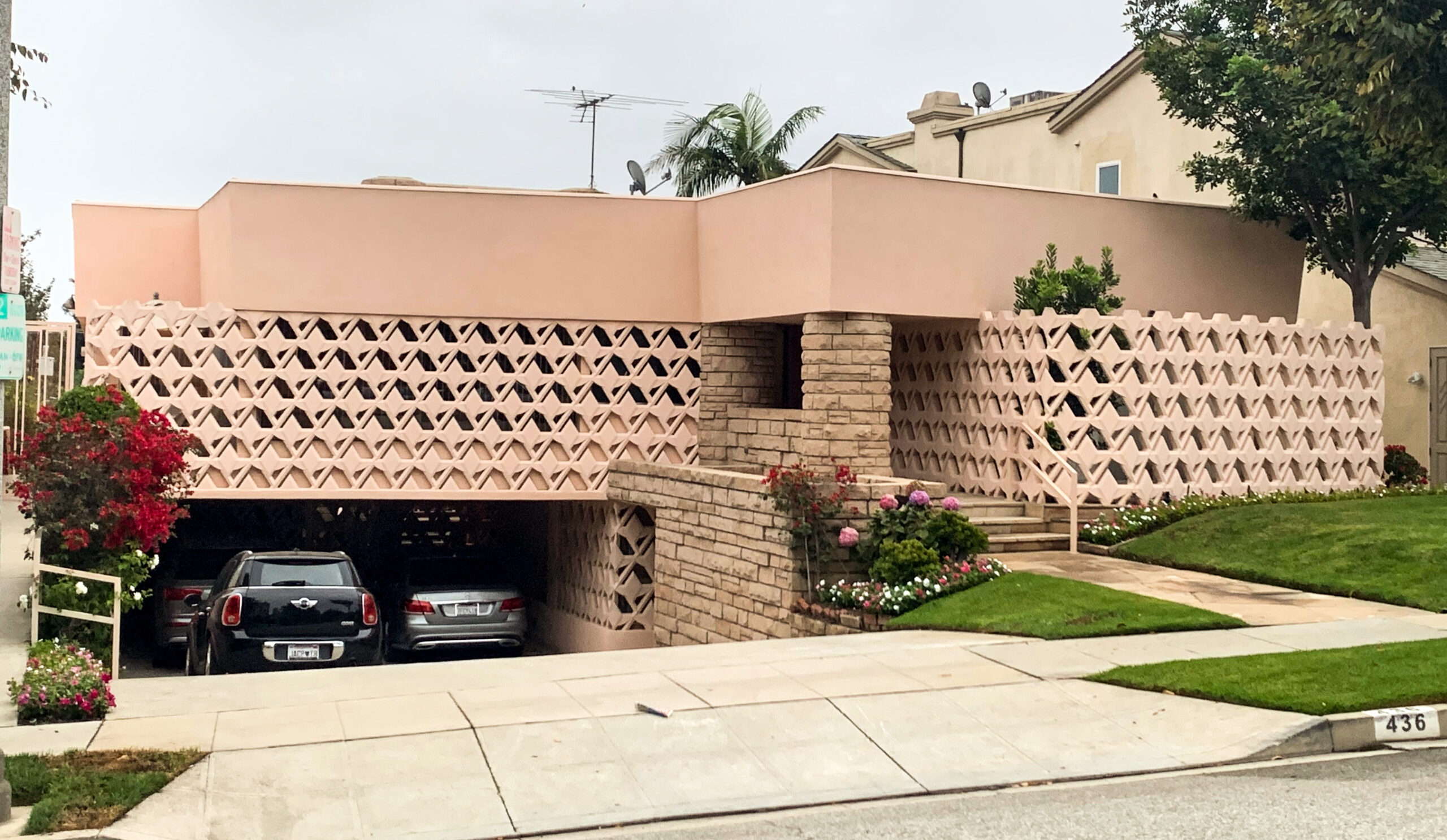
In architecture circles, they just refer to him as Lloyd Wright instead of Frank Lloyd Wright Jr. I suppose this is a way of differentiating him from his father and his father’s considerable shadow, but that’s also the legacy that helped create him and cut his teeth in the world of architecture and design.
Lloyd Wright’s Beginnings
Lloyd Wright was born right near the turn of the century in 1890 to Frank Lloyd Wright and his first wife Kitty. He grew up in Oak Park, Illinois just outside of Chicago. Following his father’s steps, he attended the University of Wisconsin for two years. At the time, his father was philandering with the wife of one of his clients, and although they were both still married, they decided to run off to Europe to be together. Lloyd Wright, 19 at the time, followed his father and moved with him to Florence, Italy.
After spending a year living in Italy and traveling through Europe, Wright moved back to the States. At the tender age of 21, he landed a job working at famed landscaping firm Olmsted and Olmsted in Boston. After working with them for several years, he was transferred to Olmsted’s San Diego branch to work on the 1915 Panama-California Exposition. SoCal was where Wright would spend the rest of his life.
Olmsted proved to be great experience for Lloyd Wright, and is where he met his future partner Paul Thiene, who helped form a short-lived landscape partnership. By the age of 26, Lloyd Wright went solo and founded his own practice.
Lloyd Wright’s Prime Time
In his 30s, Lloyd Wright really blossomed. He designed sets for Paramount Studios, created the plans for the Henry Bollman house and really pioneered the textile block system as a construction technique. In 1922 at the age of 32, he designed and built the Taggart House for his mother-in-law Helen Taggart, then consecutively supervised as the construction manager at four of his father’s sites during 1923 and 1924 (Millard House, Storer House, Samuel Freeman House and the Ennis House).
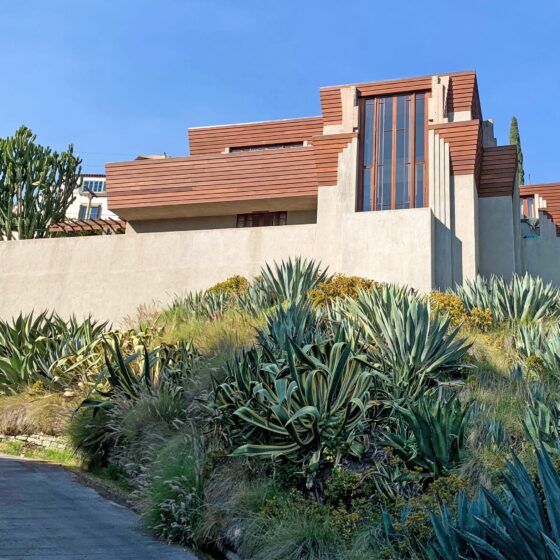
At this point, Lloyd Wright was in full-on architect-rockstar mode designing his most iconic works the Sowden House then the Samuel-Navarro House. He also designed the second and third band shells at the Hollywood Bowl. Although the acoustics were a hit, the design was not—the shells stood for only two years before being torn down.
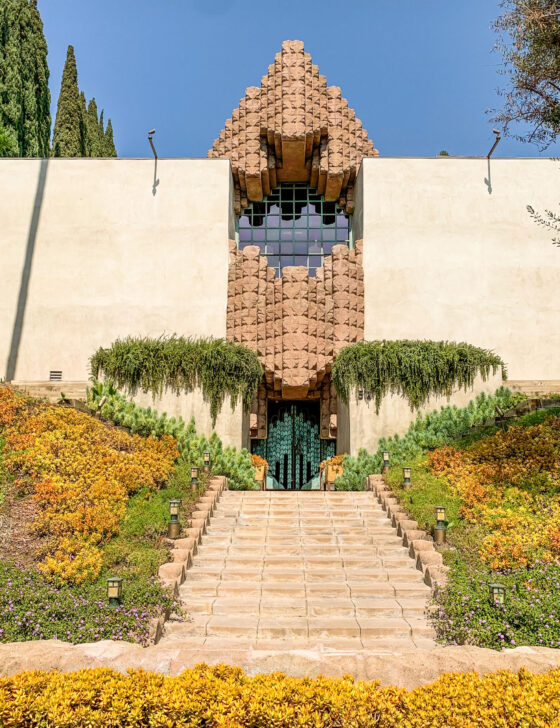
Wright was at the peak of his career: he had just designed his home and studio in West Hollywood on Doheny, he was happily married and expecting a child. That was when the Great Depression hit.
Late Career Masterpieces
The Great Depression had a huge effect on everybody. Instead of new builds, Wright resorted to remodels and redesigns, which was the only market available during much of the 1930s.
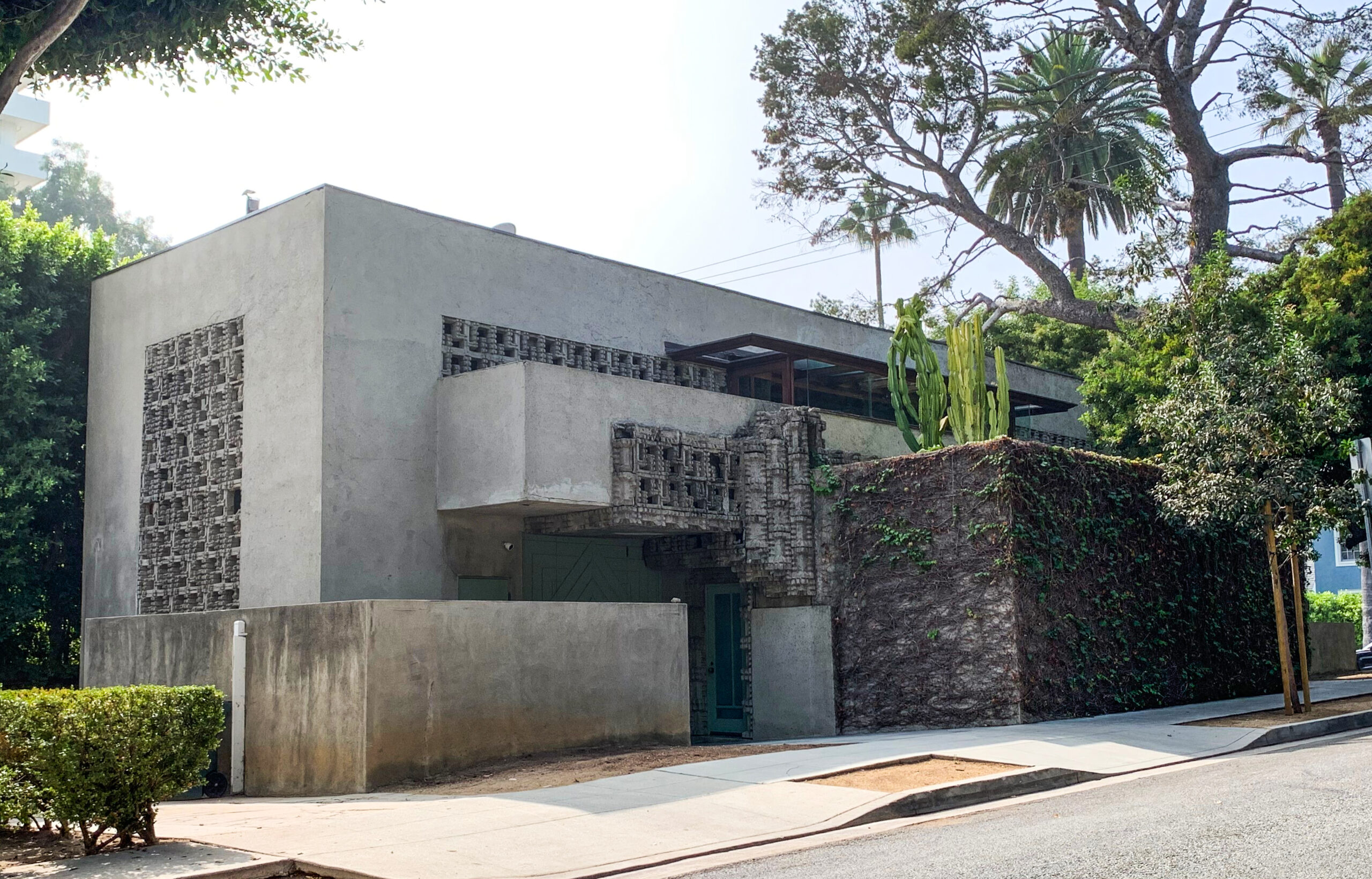
In his mid 50s and early 60s, he built a large collection of buildings at The Institute of Mentalphysics (Joshua Tree Retreat Center) and also built arguably his most famous masterpiece, the Wayfarers Chapel aka “The Glass Church.”
The Wayfarers Chapel sits just off Palos Verdes Drive atop a bluff. You climb these tree-lined stairs to get to the top, where this glass church stands, surrounded by towering redwoods and overlooking the ocean. Sound dreamy? Absolutely. Probably the most romantic place I’ve ever seen in my life.
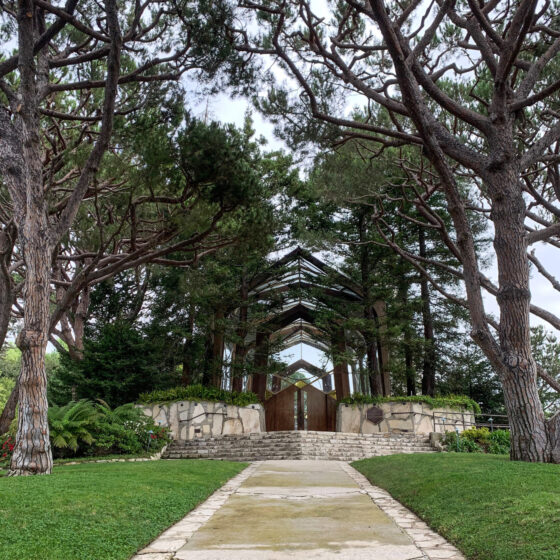
One of his last projects, not too far from the Wayfarers Chapel, was the John P. Bowler residence, known as the “Bird of Paradise” home. He designed this house at 73, and it used to have a turquoise corrugated fiberglass roofline that has obviously been removed.
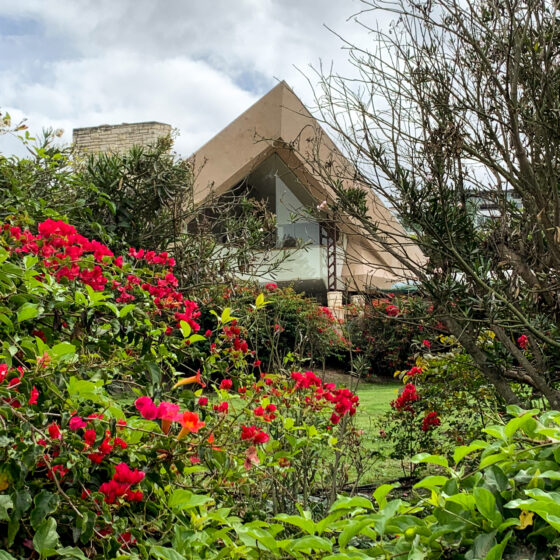
Lloyd Wright was an incredible architect and visionary in his time. Despite having huge shoes to fill, he is beyond accomplished. His iconic buildings and homes are located all throughout LA. If you live in the area and are stir crazy at home, a Lloyd Wright architecture safari is definitely a fun remedy.
Want to see more Wright family architecture? Check out our post about the senior Frank Lloyd Wright’s Fallingwater.
Don’t forget to follow us on Instagram, Facebook and Pinterest for more mid century articles and ideas!
About the Contributor


